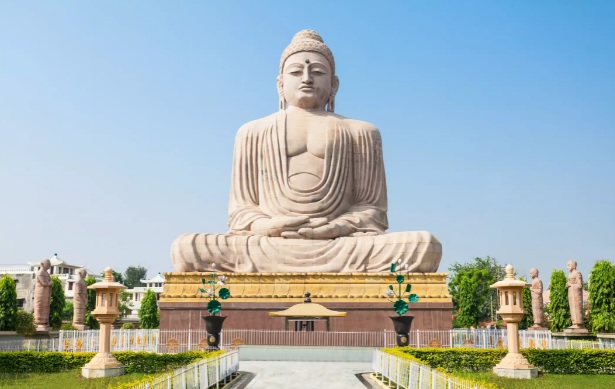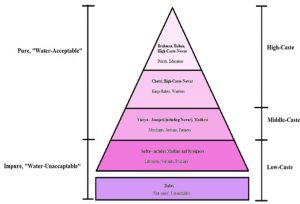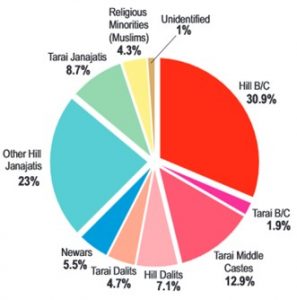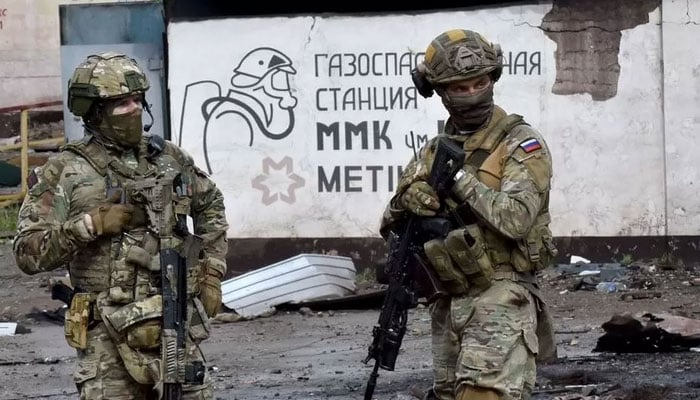
Contributed by LIPR Ambassador of Peace from Nepal Hem Pun
From the inception of its history, Nepal has been a unitary Hindu-kingdom encompassing 147,181 square kilometers. Today, Nepal is one of the least developed countries according to their annual per capita income. Nepal’s population is nearly three million people, and the country lies between two Asian giants, China and India. Nepal is made up of 123 different ethnic groups and three geographic regions, creating a complex setting for ethnic and political conflicts (Arai, 2016). During one such period of conflict, Nepal experienced a series of people’s movements and violent clashes between 1950 and 2006. During this time, Nepal drafted six different constitutions (Nepal – Country Constitutional Profile, 2015).

Concluding a decade of armed conflict between Maoists and the government of Nepal, a twelve-point Comprehensive Peace Agreement was signed in 2006. This agreement forced Nepal to adopt a secular federal government structure, promulgating an Interim Constitution of Nepal in 2007. Nepal then needed to replace the Interim Constitution with a more permanent document, and so on September 20, 2015, Nepal adopted the 2015 Constitution. This new Constitution federated the country into seven separate states (“Nepal – Country Constitutional Profile”, 2015).
As this new governing document was set to be adopted in 2015, one ethnic group known as the Madhesi revolted against the Constitution, and blocked all major Nepalese trade points with India. The Madhesi Joint Democratic Front (MJDF) staged a mass movement that engulfed Nepal in a serious political, economic, and social conflict for six months. Ultimately, this conflict wounded over 1,000 people, and claimed the lives of 59 civilians and eight police personnel. Later, other ethnic groups also joined the movement against the new Constitution. The two major demands of the MJDF were as follows: 1) Redraw the boundary of seven federated provinces with ethnic names and only two provinces in the plain land. 2) Proportional representation of the Madhesi, indigenous people and low castes in all organs of the state, and seat allocation in the parliament on the basis of population (Times of India, 2016).
This situation of political gridlock over the constitution prevailed in Nepal, dividing the country into two groups. These groups included secularist/federalist supporters, who were the Madhesi and indigenous people, as well as the anti-secularist and non-federalist proponents, who were the high Hindu castes, as well as Pro-Royal forces and some fringe political parties. Neighboring India strongly supported only two states in Tarai, and China was against the ethnicity-based federalist governance in Nepal.
From this conflict stemmed a new polarization between Madhesi and indigenous people, including the lower castes and minorities of Nepal, who constitute above 72% of the country’s population (Central Burear of Statistics Nepal, 2014). The Federal Alliance Movement (FAM) included the Madhesi people, all Janajatis (hill and mountain people), and minorities of 24 different political parties. The FAM alliance was established with the motto, “We are against racial nationalism” (Nepal News, 2016). This motto highlights the discontentment and grievances felt against the Nepalese government’s institution of castes.
Speaking to the nature of this conflict, Vamik Volkan (2004) states, “large group regression after a society has faced a massive trauma involving drastic loss of life, property, or prestige, and sometimes humiliation by another group- reflects the efforts of a group and its leader to maintain, protect, modify, or repair their shared group identity” (Volkan, p.58). Women in Nepal present an example of this type of large group repression. Nepalese women have experienced barriers to opportunities for development over many centuries. The Manusmriti, a jurisprudence of legal text of the Hindu religion, instructs, “In case a woman, proud of greatness of her excellence or her relatives, violates her duty towards her husband, the king shall arrange to have her thrown before dogs at a public place” (Patwari, 2011). This passage illustrates how the strict divine code mandates viewing women as objects of men.
This same text aligns with Galtung’s (2010) statement on the four stages of Hindus’ life and basic human needs. Galtung argues, “freedom and survival are not highlighted, may be freedom of choices is incompatible with low castes, and kill or be killed is built in one of the highest castes, Kshatriya” (p.33). From this passage, it is even clearer that low castes have experienced long-term large group repression under Nepalese law, and that a modern Constitution is necessary to protect basic human rights. This example about the view of low castes as a marginalized community in Nepal demonstrates how the conflict around Nepal’s Constitution of 2015 affects the lives of so many of the country’s similarly marginalized demographics and social groups .

The conflict surrounding the 2015 Nepalese Constitution represents the beginning of a conclusion to the decade-long armed conflict in Nepal. During this time, people’s aspirations for equity and inclusive development for all castes have challenged the historically deep rooted caste system. Galtung describes the Basic Needs Approach to peace building, arguing that these needs are the source of social conflict. Galtung categorizes these needs as “survival, well-being, identity, and freedom” (Arai 2016, p. 9). The current wave of rising inequality in Nepal resulted in part from the culture discriminating against the basic needs of those from lower castes, and minority ethnicities, as well as those living in rural areas (Bhattarai, 2003).
While progress is being made to improve conditions for Nepal’s lowest castes and marginalized groups, other peripheral challenges in Nepalese society still exist. These challenges include most of the state power being centralized in elite groups, so political leaders are subject to corruption, nepotism, and favoritism. Additionally, most development activity in Nepal is centralized in the capital city and other regional headquarters, leaving rural populations with access to fewer resources and limited social mobility (UNDP, Nepal, 2014).

PART II – Analysis
These impediments on Nepal’s social development characterize the definition of development offered by economist Amartya Sen. According to Sen, development is, “a process of expanding the real freedom that people enjoy” (Arai, 2016). Nepalese society has been ruled for many centuries on the guiding principles of the Hindu code of conduct, which resulted in systematic social deprivation, intolerance, repression, and dehumanization of the low castes. Contrasting this situation, inclusive development consists of ensuring that all marginalized and excluded groups are stakeholders in the development process. The goal of this practice is to achieve a secular and inclusive society, which is able to accommodate differences and values diversity (Arai, 2016).
Galtung’s theory of structural violence illustrates the violence in both observable surface structure and deep underlying structure. In a hierarchy where bilateral relations are vertical or absent, high castes such as Brahaman and Kshatriya are on top of the pyramid. The excluded untouchable castes, and minorities like the Madhesi and Janajati peoples are on the bottom of the pyramid (Galtung, 2010). Fisher et al. (2000) explain the Onion Theory, which identifies the three layers of the “onion” as “Positions, Interests, and Needs”. The outer layer of the onion represents “what we say we want,” and the second layer of interests represents “what we really want.” The core layer of needs represents “what we must have” (Arai, 2016, p.9). In the Nepalese context, the onion theory must account for multi-ethnic and multi-linguistic diversity. Hence, meeting the positions, interests, and needs of the Nepalese people requires implementing power-sharing mechanisms to transform centralized power structures into more local and inclusive institutions, representing the views of even the most marginalized groups.
The 2015 Constitution of Nepal opened an avenue for the broader aspirations of the country’s marginalized people through a secular society. According to Veit (2007), “Secularization has a triple, connected and contested meaning. Culturally, it designates the secularization of general cognitive and normative cultural frame; views of world, society, and man. Socially, it designates a decline of religious beliefs and practices in modern societies. Politically, it refers to a secularization of states and politics (p. 39). Relating to this definition, an excerpt of the Preamble of Nepal’s 2015 Constitution reads:
Ending all forms of discrimination and oppression created by the feudalistic, autocratic, centralized, unitary system of governance, protecting and promoting social and cultural solidarity, tolerance and harmony, and unity in diversity by recognizing the multi-ethic, multi-lingual, multi-religious, multi-cultural and diverse regional characteristics, resolving to build an egalitarian society founded on the proportional inclusive and participatory principle in order to ensure economic equality, prosperity and social justice, by eliminating discrimination based on class, castes-based untouchability. (Nepal – Country Constitutional Profile, 2015)
According to Watts (2011), “Federalism is defined as a multi-tiered government combining elements of shared rules and regional shelf rule. It is based on the presumed value and validity of combining unity and diversity, i.e. of accommodating, preserving and promoting distinct identities within a large political union. The essence of federalism is a normative principle is the value of perpetuating both union and non-centralization at the same time” (p. 8). This notion of Federalism is a critical piece of analyzing the conflict surrounding Nepal’s Constitution of 2015. Part five of this constitution states:
Regarding the Structure of State (1) The main structure of the Federal Democratic Republic of Nepal shall be three levels, namely the Federation, the State, and the Local level. (2) The federation, State, and Local levels shall exercise the power of state of Nepal pursuant to this constitution and law. The other salient points are; parliamentary form of government based on pluralism, residual power of the federal government, three tier of judicial bodies, Judicial council, single citizenship of sate identity, no death penalty, right to freedom and religion, right against untouchability and discriminations, right to social justice, provision of referendum with respect to national interest. (Nepal – Country Constitutional Profile, 2015)
Because of this Constitution, Nepal created seven federated states whose names would be determined through the consensus of a two-thirds majority of the respective legislature. However, the relationship between federalism and secularism quickly became a burning issue for Nepal’s political parties. Today, 25 developed and developing countries are adopting federalist politics, affecting the lives of two billion people, or 40 percent of the world’s population (Watts, 2011, P.5). Nepal, being federated as a secular society, has the potential to address the historical grievances of oppressed people by changing cultural attitudes and government policies.
Politically and constitutionally, the seven states issue has become deeply controversial, and all parties involved are demanding a re-delineation of the states using an identity-based approach. Krishna Hachhethu (2014) argues that Nepal’s hegemonic neighbor, India, is constituted primarily on the basis of linguistic identity, which became the major source of inspiration for those championing identity-based federalism in Nepal (Karki & Edrisinha, 2014). On the other hand, the preoccupied high caste forces are against identity-based federalism, as they argue that Nepal is home to over 123 castes, ethnic, and linguistic communities. If followed, this approach will weaken the country and may negatively affect the social harmony and territorial integrity of Nepal. One of the prominent senior leaders of Madhes, Mr. Mahanta Thakur says “the issue of Madhesh is not meant to split the nation or to be easily ignored.” He goes on to say that there is no alternative to protest in order to get rights fulfilled, as the Madhesh have become victims in their own land (Kathmandu Post, 2016).
The reality on the ground has proved this issue to be pertinent in considering the re-delineation of the state boundaries, particularly within the context of ethnicity and regional perspectives. The community’s demand of constituency based on their representative majority within the given state is still cognitive. Since the constitution was drafted, both India and the EU have agreed on the need for a lasting and inclusive constitutional settlement in Nepal, which will address the remaining Constitutional issues in a time-bound manner, and promote political stability and economic growth. (EU-India Summit, Brussels, 2016).
PART III – Implications for Practice
In my view, the 2015 Constitution of Nepal has created new opportunities for all the people of Nepal. The country has moved forward and helped the people come to terms with past grievances. The new Constitution has helped to make a new Nepal by declaring a secular country for inclusive development. Now is the crucial time for political forces to come together. These political forces include the right-wing parties (Nepali Congress & allies), center left parties (United Marxist Leninist & similar other communist parties), ultra-left political parties (Maoist & allies), and extreme right political forces (pro-royal parties and pro-Hindus).
In Nepal, federalism is the byproduct of Madheshi and ethnic movements, which sparked the major cause of the conflict about the demarcation of seven states. In reviewing the demarcation of the existing states boundaries, the country’s geographic diversity and ethnic clusters are the central concern for peace building efforts in the wake of this conflict. Donald Watts (2008) suggests economic viability and natural resources (such as water, tourism sites, minerals, timbers, density of the population) are other primary considerations in the re-delineation process as new state boundaries and names are determined.
The names of these seven federated states were to be decided after the election of the provincial assembly (Nepal – Country Constitutional Profile, 2015). In naming the states, I believe regional and ethnic considerations are the primary concern. In essence, I am advocating for non-ethnic and non-regional names, so that Nepal can ensure the identity and social co-existence of all castes. Concerning the sharing of power and identity, Arai (2016) promotes the idea of, “A mechanism to allow ethnic and/or other groups that claim a distinct identity to exercise direct control over affairs of specific interest to them (e.g., language religion) while allowing the larger entity to exercise those powers that cover common interest (e.g., foreign , defense, fiscal policy)” (P.93). I also believe that Nepal’s economic and geopolitical dimensions should preserve the country’s indigenous traditions, culture, languages, and heritage, as well as territorial integrity and sovereignty. In doing so, Nepal can move forward towards equity and begin to distance itself from centuries of practicing dehumanization through the caste system.
I believe the most progress will be made when the high castes can respect common human values and co-exist with lower castes. In doing so, the high castes will need to deconstruct their embedded ideas about “untouchable” people and ultimately reshape the social order by sharing access to power and resources. This approach allows Nepal to cultivate long lasting institutionalization of religious freedom, promote the dignity of equal castes in all spheres of life, and bring an end to the domination of the lower castes by the higher castes.
Galtung (1996) lays out three perspectives on development as culture oriented, needs oriented, and growth-oriented perspectives. Any developments taking place should have a major consideration for preserving and promoting the cultures of all ethnic groups, as Nepal is home to a multi-ethnic culture. The social structure is based on the Hindu’s four caste systems, and this structure has created violence and suffering for low castes. Dismantling this caste system is perhaps the greatest measure that can be taken to deconstruct and eradicate the views of untouchability. As poor country whose infrastructure has been subject to armed conflict and a recent earthquake, Nepal is in need of an equitable peace building and development plan. Keeping these perspectives in mind can help to create a secular society in order to achieve inclusive development in post-war Nepal.
I believe a consideration of Galtung’s 3 R’s—Reconstruction, Reconciliation and Resolution—would also be the most effective strategy to promote equity in the conflict-sensitive society of Nepal (Galtung, 1998). Galtung explains, “[There are] four approaches to Reconstruction. a) Rehabilitation: the collective sorrow approach–with emphasis on psychology, especially trauma healing, b) Rebuilding: the development approach–with emphasis on economy and social infrastructure, c) Restructuration: the peace structure approach–with emphasis on structure and power relation, and, d) Reculturation: the peace culture approach–with emphasis on culture” (Arai, 2016, p. 100).
One author further describes Reconciliation as, “A societal process that involves mutual acknowledgement of past suffering and the changing of destructive attitude and behavior into constructive relationships towards sustainable peace” (Karen, 2007). The high castes realize the present global context and inhumane behaviors, and through the ‘joint reconstruction approach,’ this realization will help deconstruct their consciousness of being superior over the lower castes. Both groups must begin to work shoulder by shoulder to construct the water supply point village schools, and also promote community level livelihood farming. This process of collaborative activities taking place between high castes and low castes is an agreement or Resolution. As Galtung (1996) states, “In doing reconstruction and reconciliation, and then continue the work for resolution, non-violently, which also means without verbal violence, is learning by doing and doing while teaching” (p. 104).
As a builder of peace, my intervention would include a bottom-up approach based on Gandhi’s ‘Satyagraha Movement’. Bondurant (1971) states “satyagraha is a technique of action. It is characterized by adherence to a stated truth by means of behavior which is not violent but which includes self –suffering. It seeks to effect change and it operates within a conflict situation” (p.36). I am proposing a succinct outline plan of a Satyagraha movement on behalf of low castes of Nepal. This movement will be focused on eradicating untouchable practices entrenched in the behaviors of high castes. I shall abide by all fundamental rules, and codes of discipline, taking the proper steps of campaign organizing as outlined by the work of Gandhi.
My peace building efforts put me in a role of coordinator at an NGO, known as “Inclusive & Equity for Social Justice-Nepal (IESJ-Nepal). My plan is for this NGO to consist of nine women members, three members from organizations such as the Dalit Welfare Organization (DWO), United Democratic Front of Madhesh (UDMF), and Nepal Federation of Indigenous Nationalities (NEFIN). A Dalit woman will lead this organization as the official Director. The three main objectives would be to 1) Construct a drinking water pipeline and establish a water point at the premises of village schools, 2) Establish a micro-level mother fund for livelihood framings, and, 3) Create informal education programs for Dalit women.
The second objective of establishing the micro-level fund (Dhukuti, practiced in Nepali community) will be accomplished through collecting five rupees (US $ 00. 05 cent) each month from each household. IESJ-Nepal would also donate fifteen thousand rupees (US$ 150.00) as seed money for piloting the fund. This fund would be used to promote informal education for Dalit women, as well as provide training in livelihood farming and water supply maintenance. Informal education programs for Dalit “untouchable” women can occur at village schools. Classes could also be conducted on farm land, or during village public ceremonies. A Mother Group could appoint teachers/facilitators from local school teachers among each village.
This Mother Group would also select a couple of Dalit families to invest in chicken, goat, and vegetable farming. IESJ-Nepal and both Mother groups would finalize the operational guidelines of the Micro-fund (Dhukuti) pertaining to these investments. The feudal system of Dalits who work with sewing cloths, making shoes, and crafting iron tools for the higher castes would be changed. Traditional professions of this group would be commercialized by giving Dalits more access to vocational training, helping them explore new markets for their products. An awareness campaign would be organized based on the principles of Gandhi’s Satyagrah.
Upon completion of the water point installation at school premises, all District level government officials (administrative & security) and political party leaders would be invited to attend an inaugural ceremony at one school in each village. All guests would take seats together with Dalit people, including village Chiefs and Head-Masters. A Dalit student would offer a glass of water to all guests, and then they will drink together in the presence of all the villagers. Village Chiefs and Chief District Administrative Officers would announce that the water point and school are Free of Untouchability, as untouchable practices are against the 2015 Constitution of Nepal. The national Kantipur and Sagarmatha TV channels would relay live programs. Local radio stations would also broadcast this news for three days at 9 AM and 8 PM each day.
John Lederach (2005) offers some insight that is relevant to this complicated Nepalese secular and federal dilemma, saying, “the past that lies before us.” This vision suggests that the future is in the hands of the Nepalese people. As in this context, there should be a fusion of the past and the present. The high castes should realize the reality of this fusion, and its far-reaching implications regarding secular society. Re-demarcation of the seven federated states using a pragmatic solution can be one of the best tools for implementing aspects of the 2015 Constitution of Nepal. Also, implementation of my proposal would enable a road map of inclusive development through promoting equity and dismantling the caste-based system throughout the country.
References
Arai, T. (2016). A study guide: 2016: Post War Development and Peacebuilding Spring II.
Bhattarai, Baburam. 2003. The Nature of Underdevelopment and Regional Structure of Nepal: A Marxist Analysis. Delhi, India: Adroit Publishers.
Bondurant, Joan. 1971. Satyagraha as Applied Socio-Political Action. Chap. 3 in Conquest of Violence: The Gandhian Philosophy of Conflict, revised ed. 36-104 and 236-7. Berkley, Ca.: University of California Press
Caste Ethnicity Population – Central Burear of Statistics (CBS) Nepal. (2014). Retrieved from http://cbs.gov.np/sectoral_statistics/population/caste_ethnicity
EU-India summit, Brussels , 30/03/2016. (n.d.). Retrieved May 09, 2016, from
http://www.consilium.europa.eu/en/meetings/international-summit/2016/03/30/
Fisher, S. (2000). Working with conflict: Skills and strategies for action. New York: Zed Books.
Galtung, J. (1998). After violence: 3R, reconstruction, reconciliation, resolution: Coping with visible and invisible effects of war and violence. S.l.: Transcend.
Galtung, J. (2010). A theory of development: Overcoming structural violence. Oslo, Norway: Transcend University Press.
Galtung, J. (1996). Peace by peaceful means: Peace and conflict, development and civilization. Oslo: International Peace Research Institute.
Karki, B., & Edrisinha, R. (2014). Post peace agreement constitution making in Nepal: The Federalism Debate in Nepal. Kathmandu: United Nations Development Programme
(UNDP), support to Participatory Constitution Building in Nepal (SPCBN).
Kathmandu Post Reporter, (2016, April 10). Madhes agitation halted to infuse fresh energy: Mahanta Thakur. Retrieved May 09, 2016, from
Nepal – Country Constitutional Profile. (2015). Retrieved May 09, 2016, from
http://www.constitutionnet.org/country/constitutional-history-nepal
Nepal unrest: No solution in sight, Terai death toll 59 – Times of India. (2016, January 22). Retrieved May 09, 2016, from http://timesofindia.indiatimes.com/world/south-asia/Nepal-unrest-No-solution-in-sight-Terai-death-toll-59/articleshow/50689329.cms
Patwari, H. N. (2011, August 27). The Status Of Women As Depicted By Manu In The
Manusmriti | Nirmukta. Retrieved May 09, 2016, from http://nirmukta.com/2011/08/27/the-status-of-women-as-depicted-by-manu-in-the- manusmriti/
Volkan, V. D. (2004). Blind trust: Large groups and their leaders in times of crisis and terror.
Watts, R.L. (2008). Comparing federal systems.Montréal: Published for the School of Policy Studies Queen’s University by McGill-Queen’s University Press. Charlottesville, VA: Pitchstone Pub.
We are against racial nationalism. (2016). Retrieved May 9, 2016, from http://www.nepalnews.com/


